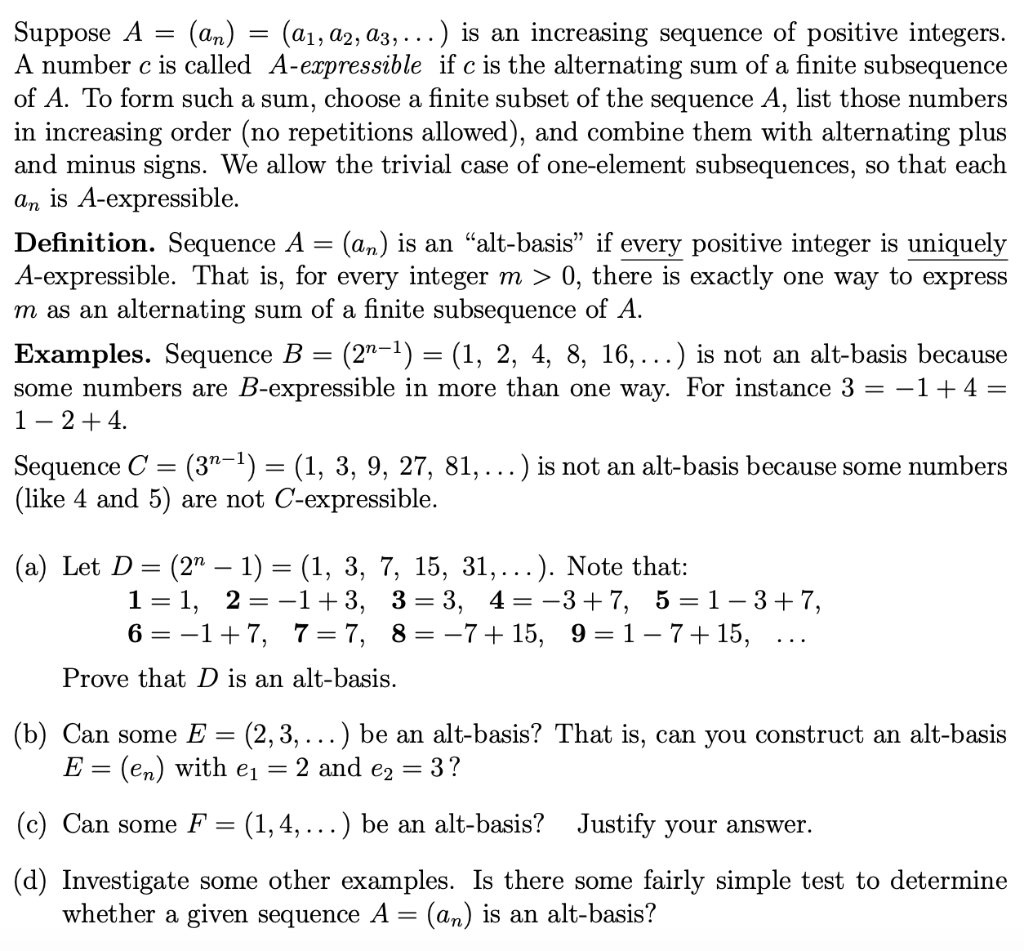Answered step by step
Verified Expert Solution
Question
1 Approved Answer
Suppose A = (an) = (a, A2, A3, ...) is an increasing sequence of positive integers. A number c is called A-expressible if c

Suppose A = (an) = (a, A2, A3, ...) is an increasing sequence of positive integers. A number c is called A-expressible if c is the alternating sum of a finite subsequence of A. To form such a sum, choose a finite subset of the sequence A, list those numbers in increasing order (no repetitions allowed), and combine them with alternating plus and minus signs. We allow the trivial case of one-element subsequences, so that each an is A-expressible. Definition. Sequence A = (an) is an "alt-basis" if every positive integer is uniquely A-expressible. That is, for every integer m > 0, there is exactly one way to express m as an alternating sum of a finite subsequence of A. Examples. Sequence B = (2n-) = (1, 2, 4, 8, 16,...) is not an alt-basis because some numbers are B-expressible in more than one way. For instance 3 = 1+4= 1-2 +4. Sequence C = (3) = (1, 3, 9, 27, 81, ...) is not an alt-basis because some numbers (like 4 and 5) are not C-expressible. (a) Let D = (2n 1) = (1, 3, 7, 15, 31,...). Note that: 1=1, 2 = 1+3, 3=3, 4= 3+7, 5=1-3+7, 6 = 1+7, 7= 7, 8=7+15, 9=1-7 +15, Prove that D is an alt-basis. (b) Can some E = = (2, 3, ...) be an alt-basis? That is, can you construct an alt-basis E = (en) with e = 2 and e = 3? (1,4,...) be an alt-basis? Justify your answer. (d) Investigate some other examples. Is there some fairly simple test to determine whether a given sequence A (an) is an alt-basis? = (c) Can some F =
Step by Step Solution
★★★★★
3.51 Rating (151 Votes )
There are 3 Steps involved in it
Step: 1

Get Instant Access to Expert-Tailored Solutions
See step-by-step solutions with expert insights and AI powered tools for academic success
Step: 2

Step: 3

Ace Your Homework with AI
Get the answers you need in no time with our AI-driven, step-by-step assistance
Get Started


